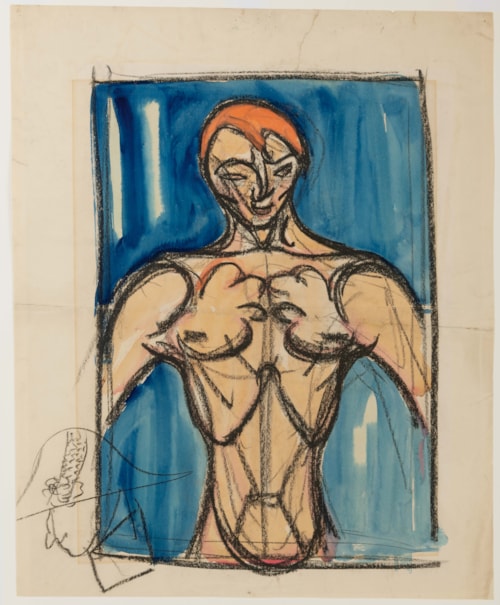
Henri GAUDIER-BRZESKA
Saint-Jean-de-Braye 1891 - Neuville-Saint-Vaast 1915
Biography
One of the leading figures of 20th century sculpture, Henri Gaudier was born into a working-class family in France, the son of a carpenter. In 1910, while studying in Paris, he met Sophie Brzeska, a much older Polish emigré and author with whom he was to share the remainder of his brief life, and whose surname he added to his own, though they never married. The following year the couple moved to London, where they lived together as brother and sister for the sake of social acceptance. Gaudier-Brzeska soon began associating with prominent figures of the avant-garde in England such as the Vorticists Ezra Pound and Wyndham Lewis, as well as Jacob Epstein and Roger Fry. As a sculptor he eschewed smoothness and polished surfaces in favour of a rough-hewn style of direct carving. Gaudier-Brzeska first exhibited at the Allied Artist’s Association in London, of which he was a member, and also showed at the International Society, with the London Group, and at the Whitechapel Art Gallery. His work was included in the inaugural Vorticist Exhibition at the Doré Gallery in London, which coincided with the artist’s death. After the outbreak of the First World War, Gaudier-Brzeska returned to France to volunteer for the French army. The following year, in June 1915, he was killed in action, at the age of just twenty-three.
A memorial exhibition of Gaudier-Brzeska’s sculptures and drawings, held at the Leicester Galleries in 1918, helped to bring his work to a wider audience. However, it was largely through the efforts of a young assistant curator of modern art at the Tate Gallery, H. S. ‘Jim’ Ede, that the artist’s posthumous reputation was firmly established. Shortly before his death, Gaudier-Brzeska had willed the contents of his studio to his companion Sophie Brzeska. When she died intestate in a mental institution ten years later, the bulk of the artist’s estate, including many sculptures and around 1,630 drawings, was acquired by Ede in 1927. Ede published a pioneering biography of the artist in 1931 and championed him as a major figure of 20th century art. He donated many of Gaudier-Brzeska’s drawings to public collections in Britain and Europe, while others were sold in order to finance the establishment of his home, Kettle’s Yard in Cambridge, as a museum.


